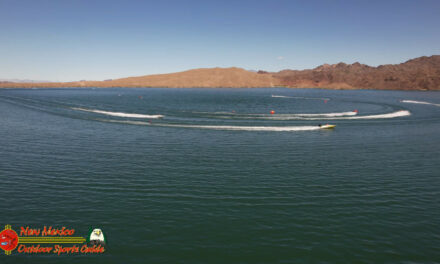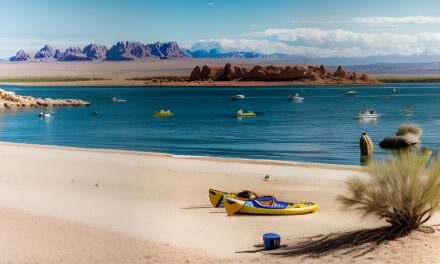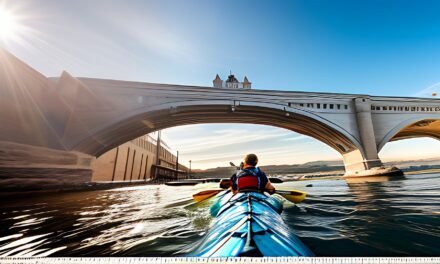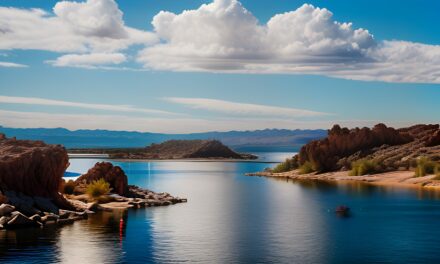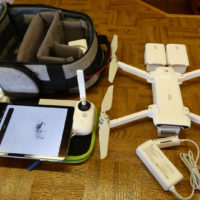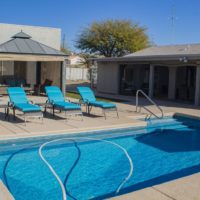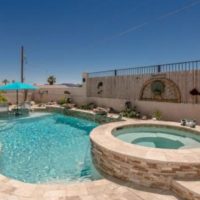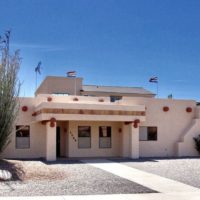Scientists in freshwater regions throughout Texas have been wrestling with the problem posed by an exotic, invading weed called Hydrilla. This plant is not native to Texas, but, according to biologists of the Louisville Aquatic Ecosystem Research Facility (LAERF), was probably brought here by compassionate aquarium-fish owners who wanted to set their pets free by dumping the whole aquarium into the lake.
One solution to the problems posed by this plant is total elimination. Attempts at eradication have included biological methods.
One such method involves the import of species to eat the Hydrilla. The problem with this method is that all the aquatic plantlife will be eaten, creating another serious problem. Fish need some sort of aquatic vegetation to survive. White amur, or grass carp, are commonly used at power plant lakes, but these vegetation-eating fish should be used with caution because, while solving the problem of overgrown Hydrilla, they have the potential to eliminate all plantlife in the lake.
According to Remmie Scarborough, the Manager of the Lake Conroe Division of the San Jacinto River Authority and a member of the Aquatic Management Society of Texas, Sonar was used early on in the eradication of Hydrilla from Lake Conroe. He is unaware of the effects of this particular chemical because shortly afterwards the Lake Conroe Marine Association and the Texas Parks & Wildlife Department decided to import a large number of white amur, or grass carp, to Lake Conroe to eat the Hydrilla.
The decision to use so many carp was for total eradication purposes and was the decision of the Texas Parks & Wildlife Department, Scarborough says. He believes that only four or five carp per acre would not have eaten all the vegetation. If a lake is considering using grass carp to control Hydrilla and not totally eliminate all vegetation, Scarborough recommends using only four or five carp per acre.
Grass carp are not considered a true biological control because they are not “host-species specific”, said the scientists at LAERF, meaning that they feed on other plants besides the problem plants. An example of a true biological control is the insect, hydrellia, that feeds on Hydrilla alone. Turtles are being studied at LAERF to see what types of plants they will feed on. Mt is a fungus that attacks Hydrilla. It is being studied for its use as a controlling agent.
All of these biological controls are still in the research stage and, according to Dr. Michael Smart of LAERF, “operational biological control of Hydrilla is still a decade away.”
Mechanical harvesting is another method of Hydrilla control that has been used on Lake Conroe, says Scarborough. It involves cutting Hydrilla much like a lawnmower and with the same results – it is only a temporary control. He thinks it makes the Hydrilla grow back thicker because in the process of harvesting it, “tubers” and “turions” of the Hydrilla are scattered onto nearby areas where they root and grow new plants.
One interesting note about biological control: grass carp will not eat Eurasian watermilfoil, another problem exotic weed found mostly in the northern United States. They had no effect on the waterhyacinth or pond lilies of Lake Conroe either, says Blake Kellum, the Water Quality Supervisor of the San Jacinto River Authority. Waterhyacinth is another problem plant that scientists are looking to eradicate.
Other methods involve importing species to eat the Hydrilla. The problem with this method is that all the aquatic plantlife will be eaten, creating another serious problem. Fish need some sort of aquatic vegetation to survive. White amur, or grass carp, are commonly used at power plant lakes, but these vegetation-eating fish should be used with caution because, while solving the problem of overgrown Hydrilla, they have the potential to eliminate all plantlife in the lake.
The decision to use so many carp was for total eradication purposes and was the decision of the Texas Parks & Wildlife Department, Scarborough says. He believes that only four or five carp per acre would not have eaten all the vegetation. If a lake is considering using grass carp to control Hydrilla and not totally eliminate all vegetation, Scarborough recommends using only four or five carp per acre.
Grass carp are not considered a true biological control because they are not “host-species specific”, said the scientists at LAERF, meaning that they feed on other plants besides the problem plants. An example of a true biological control is the insect, hydrellia, that feeds on Hydrilla alone. Turtles are being studied at LAERF to see what types of plants they will feed on. Mt is a fungus that attacks Hydrilla. It is being studied for its use as a controlling agent.
All of these biological controls are still in the research stage and, according to Dr. Michael Smart of LAERF, “operational biological control of Hydrilla is still a decade away.”
Mechanical harvesting is another method of Hydrilla control used on Lake Conroe, says Scarborough. It involves cutting Hydrilla much like a lawnmower and with the same results – it is only a temporary control. He thinks it makes the Hydrilla grow back thicker because in the process of harvesting it, “tubers” and “turions” of the Hydrilla are scattered onto nearby areas where they root and grow new plants.
Several methods have been studied for the elimination of Hydrilla, but only a few have considered the positive aspects of this plant, particularly to fishing. Most fishermen like to fish where Hydrilla is abundant. Over a period of time, however, Hydrilla can do more harm than good to a lake. If it is allowed to grow unrestrained, it can choke the lake of oxygen and other vital nutrients, killing other aquatic vegetation and fish.
But the fact remains that Hydrilla provides good fishing because it offers refuge and food for fish while it’s still in its youth. Other plants can provide this service and do not monopolize the waters. These plants are native to Texas and can grow in Texas lakes if they are not threatened by a dominating plant like Hydrilla.
These plants are duckweed, muskgrass, horned pondweed and American pondweed. These plants can provide all the benefits of Hydrilla without the problems. The biologists at LAERF are currently studying ways to introduce these preferable plants so they can be given a fighting chance over colonizing plants like Hydrilla.
Lake Conroe currently has a problem with basically no aquatic vegetation at all. Steps should be taken to introduce the right kinds of aquatic vegetation and in such a way as to ensure they will thrive in our lake. Let’s work together to give Lake Conroe a fighting chance. – Lake Havasu
– Lake Havasu



